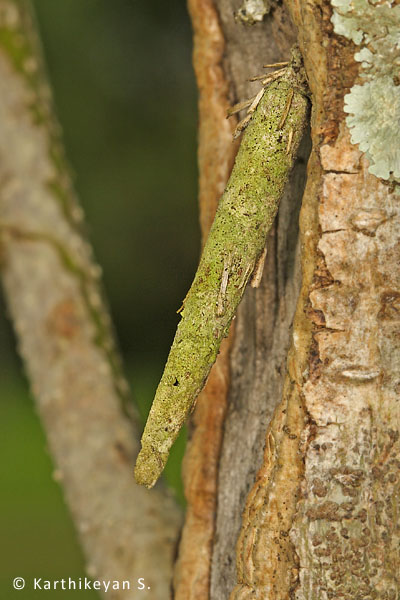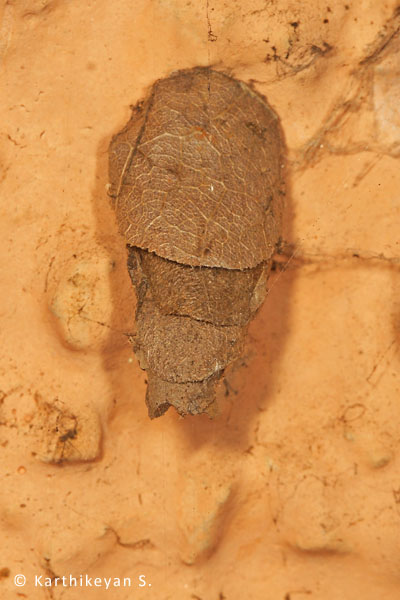Many of us may have noticed a little brown speck of ‘dirt’ stuck to the walls in our homes. It looks like a blot on an otherwise clean wall or should I say on our house-keeping skills? Often, it is promptly removed and disposed. If you were the procrastinating type perhaps you noticed that the speck has moved and it is no longer in the same place on the wall. If you happen to be curious, you would have figured out just what that moving brown speck of is!
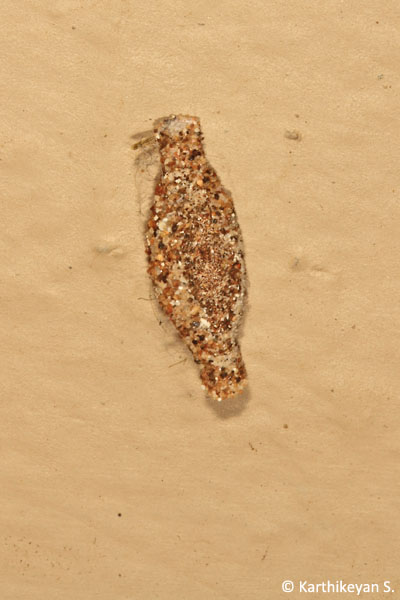
One of the more commonly seen ‘specks’- seen on the walls both inside and outside of homes. This one belongs to family Tineidae and referred to as case worms.
We are talking about what is popularly referred to as bagworms. What are bagworms? They are a small family of moths belonging to family Psychidae. This family comprises of over 1300 species of the 1.3 lakh species or so moths in the world.
There is something unique about this family of moths. The larva, soon after emerging from the egg, builds a little case. For this purpose it uses the silk that it produces and material available in their environment – could be lichen, tree bark, twigs, sand, leaves etc. It can be seen with just a bit of its body protruding out when it is moving about.
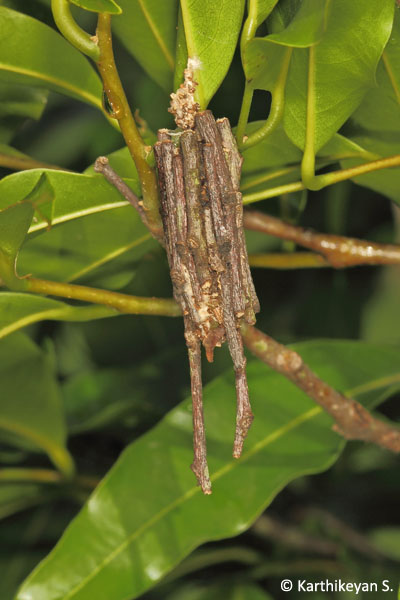
Twigs are used to make this ‘bag’. This is also a fairly common sight in places with some shrubbery.
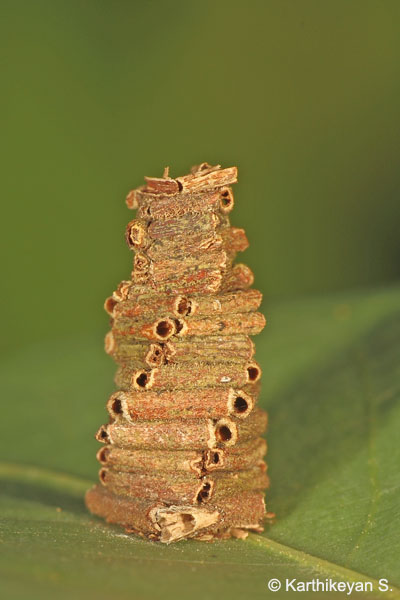
But this takes the cake for its engineering. Hollow twigs cut to the right length and organised into a tapering spiral!
So, the next time you see one of these aggregations of material – be it twigs, leaves, bark, etc., – give it another look. Lo and behold you may have discovered another beautiful piece of engineering – a bagworm!
See more images of Bagworms.
